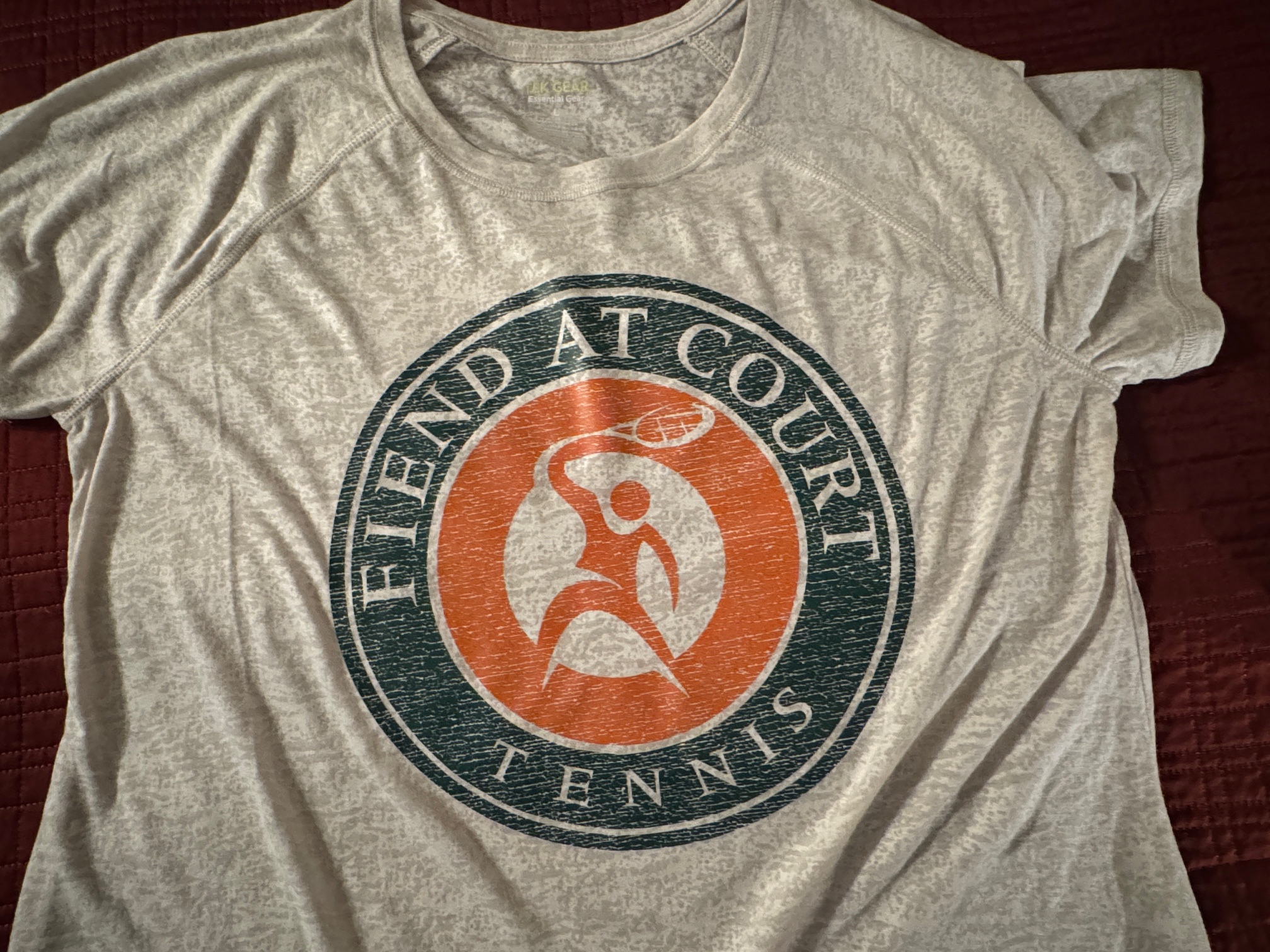Fiend at Court Unplugged
Yesterday I expressed skepticism that the reason that junior players do not transition directly into adult tournaments is because they are confused about the structure. I believe that the real point of uncertainty is understanding how they fit within the NTRP system. That difficulty arises both when looking for an event to play as well as during the self-rating process.
The NTRP self-rating resources are next to useless for experienced players. The USTA “General & Experienced Player Guidelines” supplement pictured below is the most helpful resource published by the USTA on self-rating. It is also not very useful to the majority of aging-out juniors. Additionally and paradoxically, I have never found a “front door” way to reach the chart from the USTA National web pages.

I wrote about my own self ratings challenges in “My Days as an NTRP Sandbagging Bastard.” The USTA General & Experienced Player Guidelines have been updated twice since my own self-rating event. The following table compares what my self-rating would have been if these updates had been in effect at the time. My minimum rating… weaves all over the highway. As an editorial note, I rated myself at 4.0 in 2013, which was higher than the USTA guidance at the time.
| Guidance Version | Minimum Rating | Rationale |
| TennisLink Self Rating Questionnaire (2013) | 3.5 | No junior sectional ranking criteria, did not go to State. |
| General & Experienced Player Guidelines (April 2014) | 4.5 | Based on junior sectional ranking and age over 36. |
| General & Experienced Player Guidelines, (February 2019) | 4.0 | Former junior sectional ranking (just) outside the top 20. High school varsity tennis line 1. |
For the vast majority of USTA junior players, the NTRP criteria ultimately falls back to high school playing experience. Unfortunately, “played in high school” covers an extremely broad range of tennis mastery. I do not think it is possible to effectively capture that range in a single line of a criteria matrix.
In one of the most improbable events I have ever personally witnessed in tennis, the umpire I gave birth to advanced to the Texas UIL State Championships in 6A mixed doubles her Senior year. That gave me the opportunity to eyeball players who “advanced to the State championship” for all the school sizes in Texas. The gulf between playing level observed between the small schools and the large schools is vast. In no way, shape, or form is reaching the state tournament in class A comparable to doing the same thing in class 6A.
As an interesting thought exercise, I located the first Boys 18s player from the Texas section that falls just outside the top 800 in the national rankings list, which is a key cutoff point in the NTRP General & Experienced Guidelines table. That player happens to be ranked #78 in the Texas section. By chance, that player attends a tennis academy and does not play high school tennis in Texas. There is absolutely no ratings guidance in the supplemental table applicable to that player.
As it turns out there is a very easy fix for this system and the USTA is the one organization that has the data to actually do it. The USTA should assign an initial NTRP rating to each and every player as they age out of junior tennis. If that was automatically performed, any uncertainty over how the player fits into the NTRP USTA league or tournament system is completely eliminated.
This also addresses head on another big problem that the USTA has with these transitioning juniors. Specifically they are both familiar with and comfortable with their UTR ratings. I believe that the junior players will naturally gravitate to UTR events as they age up and uncertainty over the NTRP system will only exacerbate the situation. Strategically, the USTA needs address that issue and I think that automatic assignment is the best possible option.
Automatic assignment of NTRP rating would also eliminate a lot of issues in adult league and tournament play. No longer can an enterprising captain fill a roster with former junior players with questionable self-ratings. Even in the borderline cases, speculation that this may have occurred is also eliminated.
I closed yesterday remarking on the hostility that former juniors sometimes encounter from adults in their initial NTRP league and tournament play. One of my friends commented on Facebook that she had a 23 year old player on one of her league teams that was questioned and bullied by one of their opponents and ultimately quit the team. I relayed very a similar story in “NTRP Horror Story: When the Carrot becomes a Stick.”
Automatic assignment of the NTRP ratings would have probably prevented those situations from occurring. Adults who are hell bent on being jerks will have to find another point of contention. (And some undoubtedly will.)
Tomorrow I am planning to share some radical ideas on how to engage the transitioning juniors into adult tennis.
Previous posts with my thoughts on the NTRP system:
- Tennis Ratings: The Numbers Game, June 19, 2020.
- Tennis Ratings: NTRP Horror Stories, June 20, 2020.
- My Days as an NTRP Sandbagging Bastard, June 23, 2020.
- Faux NTRP Scoundrels, June 25, 2020.
- NTRP Horror Story: When the Carrot becomes a Stick, June 27, 2020.
Referenced Sources:
- Adult NTRP Ratings: Questions and Answers, United States Tennis Association, viewed June 18, 2020.
- General & Experienced Player Guidelines, February 2019, United States Tennis Association, viewed July 31, 2020.
- General & Experienced Player Guidelines, April 2014, United States Tennis Association, viewed July 31, 2020.
- 2021 Adult Tournament Changes, USTA National Webinar, undated.
- USTA Adult Tournament Changes for 2021, USTA National Website, viewed 7/25/2020
- Fiend at Court Request, July 21, 2020, (Official response to emailed questions.)
- Kimball, Warren F. (2017) The United States Tennis Association: Raising the Game, University of Nebraska Press, Lincoln, Nebraska.



